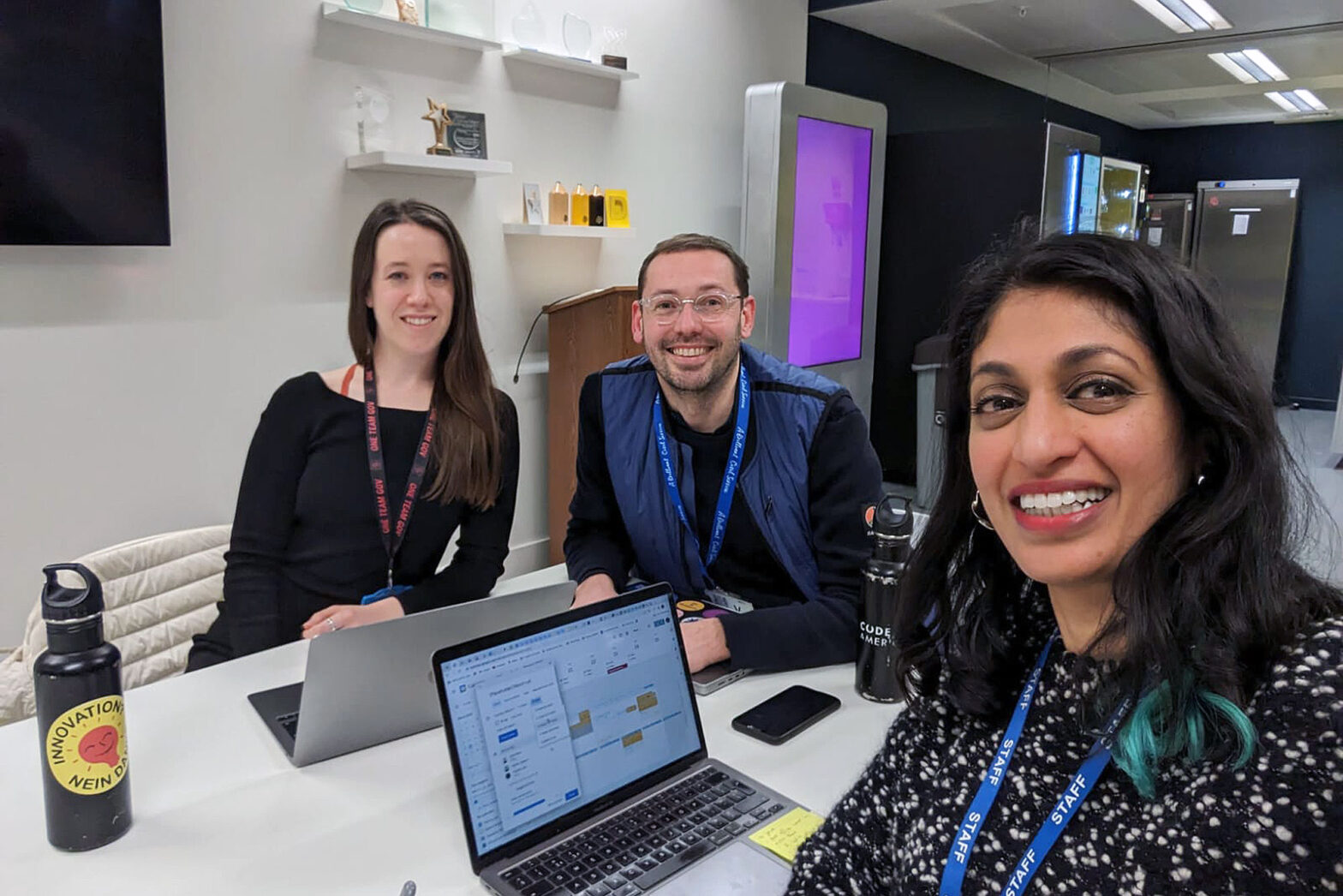This week, Kara, Paloma and I met in GDS’s London office to catch up, reboot our international community work and plan activities for 2023.
In February, we aim to run a community call on ‘working in the open’ and reached out to Giles Turnbull, who wrote a fabulous book about it. He’s interested in talking on the call. In addition, I like to see us share some of the things we have done at DigitalService in the past year, including publishing contracts with ministries we are working with.
Like in 2019, we are evaluating how we might team up with other people and tie in with in-person events that are in preparation already. With growing maturity around the globe, we are curious to hear from the community what they need the most and what they want to discuss.
And with more books from former UK government folks out, I would love to invite them all to some format and hear from them.
While my non-fiction book pile is still huge, and I’m only making slow progress, I’ve suggested these to our book club at DigitalService.
With the new year, the book club members started reading ‘Digital Transformation at Scale: Why the Strategy Is Delivery’ by GDS’s founding men. When writing my thesis, I skimmed its first edition but didn’t read it properly. With some distance, it should be better read now. Reading and then discussing books chapter by chapter allows for reflecting, digesting, and dissecting the content on a deeper level. There are another half a dozen books on the consideration shelf currently. I’m looking forward to picking up Hinrich, Jonny and Kate’s book premieres and will likely start with what I need for work the most.
Taking small steps for the growing team
This week was more about what I mentioned in the last couple of weeknotes. We are still working on our design skill-level definitions. Charlotte, Marlene, Tom and I worked on them for another few hours. Instead of finishing them by the end of the month, we are slowing down and rewriting them to align the language and ensure the 4 of us have a shared understanding of each description.
Also mentioned before: From next week on, discipline activities run for the product managers, the software engineers, and for designers at DigitalService will come together for the first time. So far, they have all been taking place on different days, making it harder for teams to plan team activities and resulting in meeting clashes.
So our ‘Design Weekly’ meeting is moving from Wednesday to Tuesday, and we are using the opportunity to reshape it and experiment for the coming weeks.
The subformats were are planning to rotate in the coming weeks are:
Work sharing — Walking through a recent piece of work with time for questions or, at a higher level of abstraction, talking about an approach, method, or tool.
Design feedback — Sharing a work-in-progress piece and having specific open questions for the other designers in the session, interactive feedback and ideation.
Learning playback — Summarising a recent course attended, conference visited or book read to maximise the impact of the learning and developing efforts by sharing with the broader team.
About me — Recapping work and personal life so far in some detail to let others in the design team understand who you are, what you’ve done and what others can ask you.
Team visit — Inviting other public sector design teams to stop by and share what they do to intensify learning and exchange, including teams from local and Federal government as well as public organisations like rail, transit, and broadcasting.
Lean coffee chat — Collecting and prioritising topics ad-hoc and using short breakout sessions to discuss a few topics for 10 mins each, doing a quick playback afterwards.
Each format needs at least 30 minutes. Team visits need more time anyways. Our weekly sessions are only scheduled for 50 minutes, and in a vote several months ago, we decided to keep that the same. With the growing team, individual check-ins and updates from each designer take more and more time and leave less for the other formats. Even when timing personal updates, which limits the exchange, we usually need more time for the following section and exceed the scheduled 50 minutes of the meeting. So we have to change how individual updates work.
As our work on design skill levels, principles, accessibility checklists and other documents continues, I was impressed to see what the design ops team at the UK’s Department for Education put together.
Eventually, I would like us to develop something similar that makes it easy for newcomers to understand how the organisation works. But also something open to and accessible by others – people in other public sector organisations, students, and potential job candidates.
For a start, I’m finishing a design and research discipline page for our ‘How we work’ section of the website. Eventually, it would be great to go far beyond that.
What’s next
Monday, I will mostly spend on the train. That allows for some more profound work. I plan to make progress on a blog post on the application of the German service standard at DigitalService, refine our OKR drafts and tweak introduction decks for new starters.

